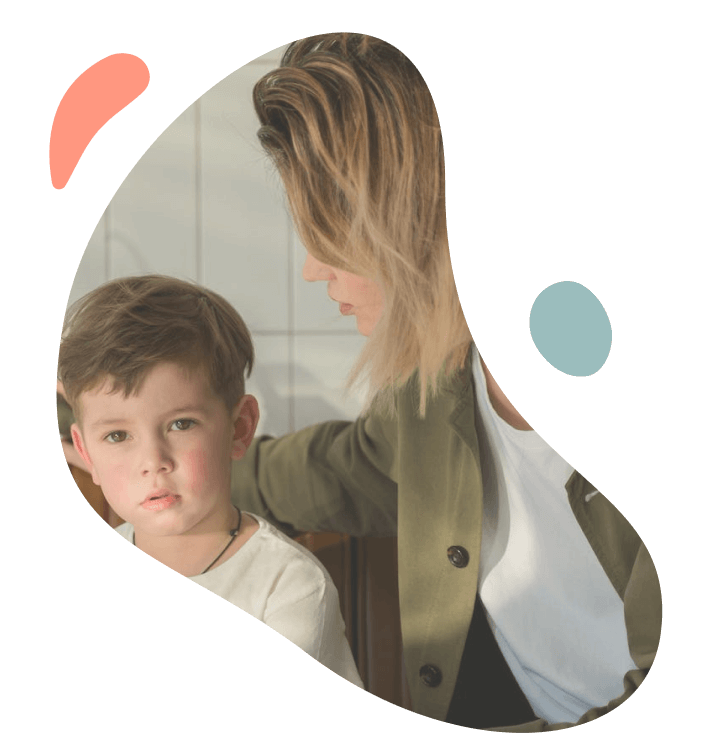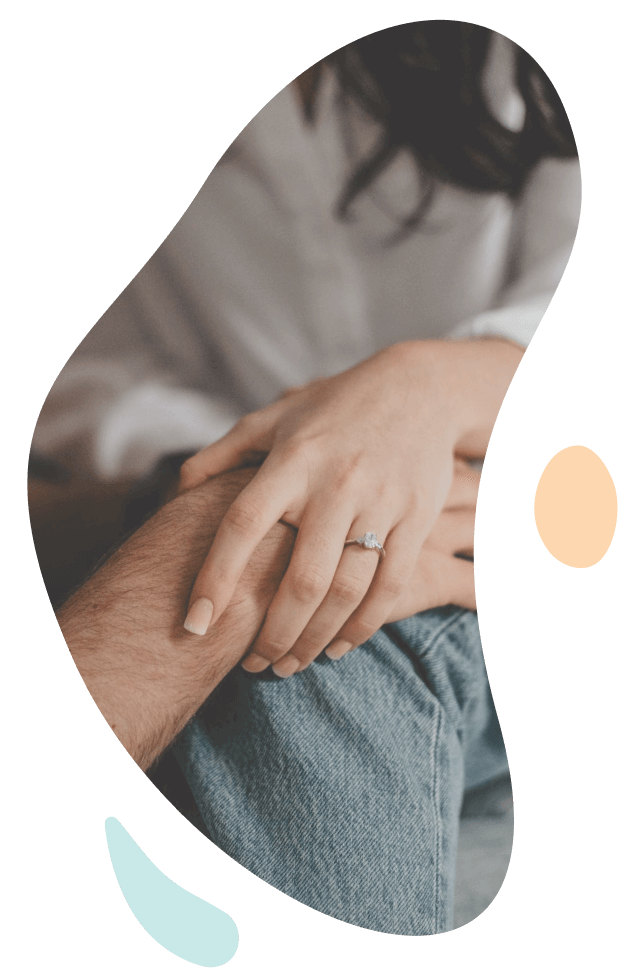Early Maladaptive Schemas
Vulnerability to
Harm/Illness
Do you often worry that something terrible is going to happen? Perhaps find yourself thinking you might have a terminal illness if you feel a little unwell? Or maybe you think the world is unsafe and fear someone will hurt you or your family? If so, you might have the vulnerability to harm/illness schema.
To answer any questions you may have regarding this schema, this article will cover the following topics:
- What the vulnerability to harm/illness schema is
- An explanation of early maladaptive schemas (EMS)
- The causes of the vulnerability to harm/illness schema
- Signs of the vulnerability to harm/illness schema in childhood and adulthood
- How the vulnerability to harm/illness schema affects a person’s life
- Treatment methods for the vulnerability to harm/illness schema
Do you know your attachment style?
Take our attachment quiz and find out now – fast, easy, free.
What Is the Vulnerability to Harm/Illness Schema?
The vulnerability to harm/illness schema is one of 18 early maladaptive schemas (EMS). Compared to others, individuals with the vulnerability to harm/illness schema have a heightened belief that something terrible is going to happen and that they are unable to prevent it, avoid it, or cope with its after-effects. Due to these beliefs, someone with this schema lives in constant fear.
The fears associated with the vulnerability to harm/illness schema can be divided into three categories:
Medical
(e.g. fear of heart attacks, cancer, AIDS, etc.)
Emotional
(e.g. having panic attacks, being admitted for psychiatric help, fear of losing one’s mind, etc.)
External
(e.g. fear of natural disasters, plane crashes, being a victim of crime, etc.)

What Causes the Vulnerability to Harm/Illness Schema?
Typically, the vulnerability to harm/illness schema arises when caregivers are overly protective and worried about their child’s safety. These caregivers may frequently warn their child of danger through using exaggerated language. For example, if a child was playing on an icy path, instead of warning “you might fall and hurt yourself”, these caregivers might say “you’ll hit your head and die.” This type of behavior can lead the child to believe that the world is a dangerous place and they need to be careful and vigilant at all times. Such caregivers may act like this because of mental illness, past experiences, or maladaptive schemas of their own.
Alternatively, this schema may also arise if the child has undergone a traumatic experience. They might have experienced the death of a loved one, or they, or someone close to them, may have suffered a major injury or developed a serious illness. In order to cushion the blow of this traumatic experience, caregivers might become overly protective and involved in their child’s life, perhaps performing tasks their child is able to do independently. This, paired with the trauma itself, would reinforce the child’s belief that the world is dangerous and that they are unable to deal with the after-effects of any threats they experience.
Signs of the Vulnerability to Harm/Illness Schema
We all worry occasionally about the possibility of something going wrong in life. However, the worries of those with the vulnerability to harm/illness schema are more heightened and constant.
Before the signs of the vulnerability to harm/illness schema are discussed, it should be noted though that this schema is based on disproportionate levels of fear in relation to an imminent threat despite being objectively safe. If you have been given a medical or psychiatric diagnosis, or if you are currently dealing with abuse, conflict, or environmental issues, fear and uncertainty about the future is a natural response.
The signs of the vulnerability to harm/illness schema in childhood and adulthood are as follows:
Vulnerability to Harm/Illness Schema in Childhood
Children with the vulnerability to harm/illness schema are disproportionately worried about bad things that may happen. Their feelings are often exacerbated because they don’t have a trusted adult to help contain or contextualize their worries. They may also feel like they need to rely on others a lot, especially for reassurance that things will be okay. However, as others do not understand their concerns or how intense their worries are, children with this schema may feel isolated. Due to their reserved and worrying nature, they may experience bullying from their peers, reinforcing their belief that the world is a dangerous place.


Vulnerability to Harm/Illness Schema in Adults
Adults with the vulnerability to harm/illness schema tend to have difficulty concentrating on daily tasks. This difficulty is due to how focused they are on perceived imminent threats. Furthermore, this focus may cause tensions within relationships, as others may be unable to understand why they are concerned or how intense their worry is.
Such adults may also find it difficult to relax and have fun. Due to their fears, and in attempts to stay within their comfort zone, they may restrict their access to relaxing and enjoyable activities. By proxy, this also impedes their loved ones from doing enjoyable activities with them.
People with the vulnerability to harm/illness schema tend to seek a lot of reassurance. This may be from their partners or loved ones, but also from doctors, other experts and professionals, or the internet. What’s more, dealing with constant worrying and the need for reassurance may place a burden on the loved ones of adults with this schema.
Due to being in a constant state of fight-or-flight and the inability to stop spiraling thoughts, people with this schema may find it difficult to sleep and might have health issues related to chronic stress. Resultingly, these people may feel a great deal of stress in their everyday lives. They are primed for seeing danger, even when the probability of something dangerous happening is low. Due to this, they may develop unhealthy coping strategies. Most commonly, they may abuse substances, such as alcohol or drugs, in order to cope with feelings of anxiety and uncertainty.
Vulnerability to Harm/Illness Schema Test
If you would like to receive a rating of how highly you score on each of the maladaptive schemas, including vulnerability to harm/illness, you can take the quiz on maladaptive schemas.
How Vulnerability to Harm/Illness Affects Someone
People with the vulnerability to harm/illness schema tend to experience ongoing anxiety connected to the belief that something will go wrong. When triggered they tend to react in one of three ways – avoidance, overcompensation or surrendering.
Avoidance
Experiencing chronic anxiety leads to feeling overstimulated. This may leave individuals with the vulnerability to harm/illness schema wanting to retreat from the world. They may lack the energy to confront their belief that the world is a dangerous place and prefer instead to avoid it, leading to isolation.
In a bid to prevent becoming more stimulated, such individuals may also avoid activities or events which they deem as being dangerous or anxiety-producing. For example, they may avoid flying out of fear of plane crashes, or exercising out of fear of heart attacks. However, by isolating themselves from others and not confronting these fears, they are reinforcing their belief that the world is a dangerous place.

Overcompensation
While much less common, someone with the vulnerability to harm/illness schema may overcompensate for their beliefs through their behavior. Doing so involves acting in ways contrary to their beliefs that the world is a dangerous place and that bad things will happen to them. They may go out of their way in order to do risky things, e.g. bungee-jumping, sky-diving, etc.

Surrendering
Some may deal with their vulnerability to harm/illness schema by surrendering to it. These people give in to the beliefs that the world is unsafe and that if something bad happens they will be unable to prevent, avoid, or deal with its consequences. Surrendering to this schema can lead to attracting, and being attracted to, others who are likely to take control within relationships. Such relationships may lead to someone with this schema being taken advantage of, especially if they are worried about monetary issues and relinquish control of their finances. However, even within relationships with a more equal power balance, they may seek a lot of reassurance and attention from their partner in order to feel safe, which their partner may begrudge.

Vulnerability to Harm/Illness Treatment / Therapy
It is common for those with the vulnerability to harm/illness schema to experience a great deal of anxiety. Schema Therapy focuses on the therapeutic relationship and the experiences of early childhood in order to challenge maladaptive schemas. Through exposure therapy and addressing childhood experiences, it is possible to reduce the level of anxiety felt in everyday life. You can learn more about Schema Therapy here. It is important to note that while maladaptive schemas are difficult to change, with dedication, consistency, and appropriate treatment, it is entirely possible to achieve positive change.
Adaptive Strategies
The following strategies may also help those with the vulnerability to harm/illness schema manage their difficult beliefs:
Recognise when you are triggered
If you have the vulnerability to harm/illness schema, you may find yourself worrying about one type of impending threat more than others. For example, perhaps you are particularly concerned about crime attacks, but not as much about getting ill. It is important to recognise the types of worries you have, how often you have them, and when you engage in avoidance behavior. Once you have this information you will be better equipped at changing your pattern of thoughts and behavior.
Practice mindfulness
People with the vulnerability to harm/illness schema tend to experience higher levels of anxiety, particularly around the future. Additionally, they may catastrophize their current situation into the worst-case scenario. This can make it difficult to relax, be present and have fun. Breathing exercises, muscle relaxation techniques, and mindfulness are all beneficial in de-escalating anxiety and focusing on the present. Training your brain to focus on the present and let negative thoughts and feelings go will make it easier to accomplish tasks even when your schema is triggered.


Be objective
The fears that arise from the vulnerability to harm/illness schema are not rooted in reality, even if they came from past experiences. Therefore, it is important to notice if you have a tendency to jump to worst-case scenarios and to challenge these thoughts when they arise. It is also vital to recognize that worse-case scenarios are rarely inevitable or representative of the present situation.
Try to find evidence to contradict your fears and rationalize how likely they are to happen. Make notes on when things did not go wrong and refer back to them when you are triggered. For example, if you have a fear of flying, you could track how often something bad happened whenever you did fly. With enough time and practice, you can train yourself to notice when these thoughts arise and how to redirect them.
Be mindful of how much reassurance you are asking for
It is common for those with the vulnerability to harm/illness schema to seek reassurance. This may be from partners, loved ones, doctors, experts, or the internet. While reassurance sometimes alleviates anxiety, it does not address the root of the problem. Additionally, seeking reassurance can quickly become compulsive, becoming a burden to those you seek it from. When the need for reassurance comes, try to challenge how realistic it is that your worry will come true and practice mindfulness to focus on the present. The need to check in and receive reassurance will pass.
The vulnerability to harm/illness schema also affects how confident we feel about looking after ourselves, increasing the need for reassurance. However, it is important to remember that while this viewpoint made sense to you as a child, you are now an adult capable of taking care of yourself. Whenever you are feeling helpless, list the ways in which you already provide for yourself and how you can use your strengths to solve your problems.
Seek therapy
If you have the vulnerability to harm/illness schema, you may have a great deal of anxiety. You may also want help to develop boundaries around reassurance and to achieve behavioral goals. A therapeutic relationship is the best condition in which to explore all these factors. But keep in mind that a schema develops over many years. While treatment cannot necessarily “cure” you, it can give you the necessary tools to manage your thoughts and feelings, and to lead a better life.
McKay, M., Greenberg, M. J., & Fanning, P. (2020). Overcome Thoughts of Defectiveness and Increase Well-Being Using Acceptance and Commitment Therapy. New Harbinger Publications.
Padesky C. A. (1994) Schema change processes in cognitive therapy. Clinical Psychology and Psychotherapy, 1(5), 267–278.
Schmidt, N. B., Joiner, Jr., T. E., Young, J. E., & Telch, M. J. (1995). The schema questionnaire: Investigation of psychometric properties and the hierarchical structure of a measure of maladaptive schemas. Cognitive Therapy and Research, 19(3), 295-321.
Young, J. E., Klosko, J. S., & Weishaar, M. E. (2003). Schema therapy. Guilford Press.








 Get mental health tips straight to your inbox
Get mental health tips straight to your inbox